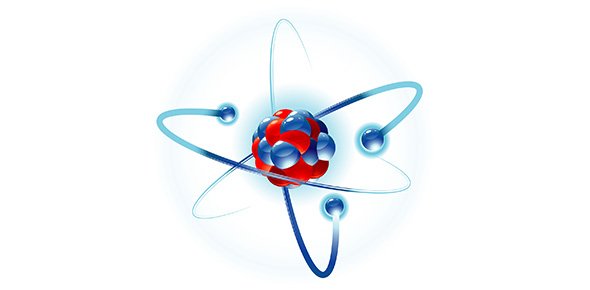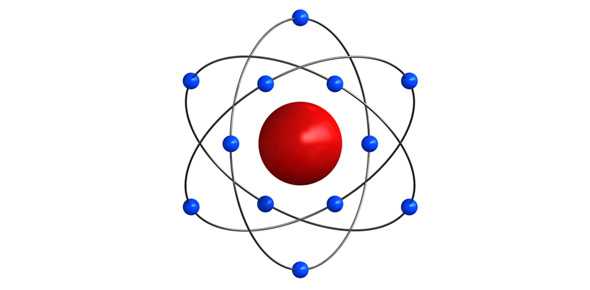Related Flashcards
Related Topics
Cards In This Set
| Front | Back |
|
10.1.1:
Describe the features of a
homologous series.
|
Include the same general formula, neighbouring
members differing by CH2, similar chemical
properties and gradation in physical properties.
Homologous series: A series of compounds (usually hydrocarbons) that display similar chemical properties and functional groups but different physical properties (generally boiling point), often differing by one repeating unit, usually a CH2/CH3 molecule. They can be given a general formula, eg CnH2n+2 Organic chemistry is the chemistry of carbon compounds (excluding compounds such as metal carbonates and oxides). The ability of carbon atoms to form chains leads to the existence of a series of compounds that have the same functional group (and hence similar chemical properties) and only differ from each other by the presence of an additional carbon atom and its two associated hydrogen atoms in the molecule (which causes the physical properties to change in a regular manner). |
|
10.1.2:
Predict and explain the trends in
boiling points of members of a
homologous series.
|
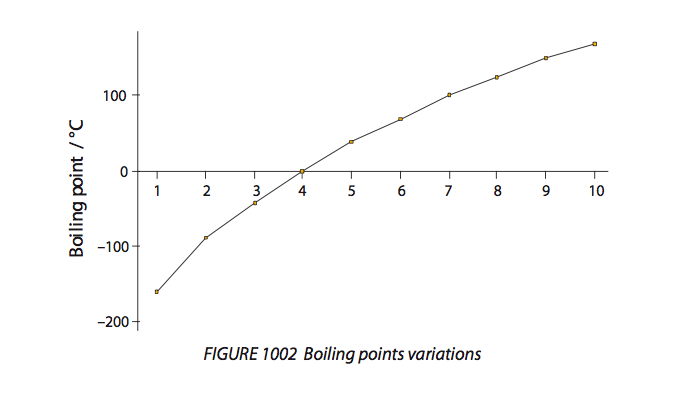
|
|
10.1.3:
Distinguish between empirical,
molecular and structural formulas.
|
Empirical formula: The simplest ratio of the atoms in a chemical compound.
A structural formula is one that shows unambiguously how the atoms are arranged together. A full structural formula (sometimes called a graphic formula or displayed formula) shows every atom and bond. A condensed structural formula can omit bonds between atoms and can show identical groups bracketed together, for example, for hexane: CH3CH2CH2CH2CH2CH3 or CH3(CH2)4CH3. The use of R to represent an alkyl group and (RING) to represent the benzene ring can be used in condensed structural formulas. Although skeletal formulas are used for more complex structures in the Chemistry data booklet, such formulas will not be accepted in examination answers. |
|
10.1.4:
Describe structural isomers
as compounds with the same molecular formula but with different arrangements of atoms. |
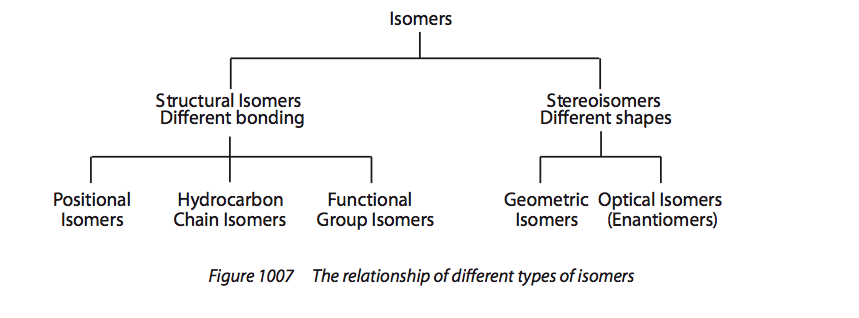 No distinction need be made between different types of structural isomerism, such as chain and position isomerism and functional group isomerism. Knowledge of stereoisomerism is not required in the core. Isomer: Two molecules with the same general formula but different structural formula (ie containing the same amounts of each atom but bonded differently) are said to be isomers of each other. Two Types:
|
|
10.1.12:Identify primary, secondary and
tertiary carbon atoms in alcohols and
halogenoalkanes.
|
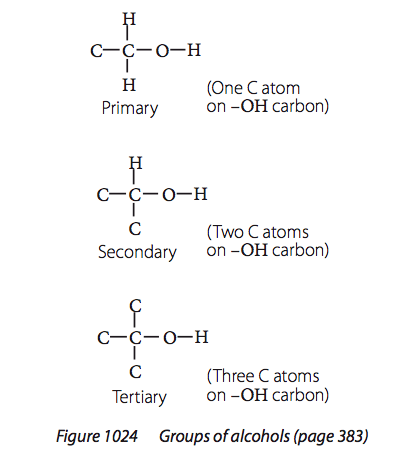 The terms primary, secondary and tertiary can also be applied to the molecules containing these carbon atoms. |
|
10.1.13:
Discuss the volatility and solubility in
water of compounds containing the
functional groups listed in 10.1.9.
|
Most organic compounds are non–polar and hence tend to
be insoluble in water owing to the strong hydrogen bonds
between the water molecules. If however the functional
groups can hydrogen bond to the water (that is those that
hydrogen bond to themselves, plus those containing the
> C= O group which can form hydrogen bonds to water),
then the substance will be water soluble, as long as the
hydrocarbon chain is relatively short. As the carbon chain
increases there is a gradual decrease in the solubility as
is the case with the alcohols.
|
|
10.2.1:
Explain the low reactivity of alkanes
in terms of bond enthalpies and bond
polarity.
|
See notes.
|
|
10.2.2:
Describe, using equations, the
complete and incomplete combustion
of alkanes.
|
The most familiar reaction of the alkanes is combustion.
Like almost all organic compounds, the alkanes are
flammable and oxidise when burnt in the air to form
carbon dioxide and water if sufficient oxygen is present.
Incomplete = CO and H2O vapor |
|
10.2.3:
Describe, using equations, the
reactions of methane and ethane with
chlorine and bromine.
|
Alkanes can also react with chlorine or bromine in a
substitution reaction, to give an initial product in which
one hydrogen atom is replaced by the halogen. Usually
these reactions are brought about by exposure to ultraviolet
light or sunlight, though they will also occur without light at high temp.
|
|
10.2.4:
Explain the reactions of methane and
ethane with chlorine and bromine in
terms of a free-radical mechanism.
|
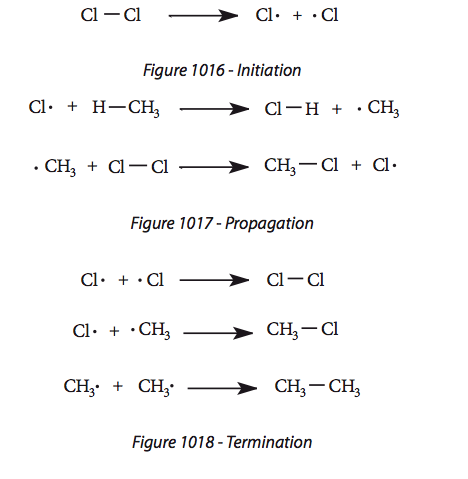 he reaction of an alkane, such as methane, with a halogen is a free radical chain reaction. Reference should be made to homolytic fission and the reaction steps of initiation, propagation and termination. The use of the half-arrow to represent the movement of a single electron is not required. The formulas of free radicals should include the radical symbol, for example, Cl• . |
|
10.3.1:
Describe, using equations, the
reactions of alkenes with hydrogen
and halogens.
|
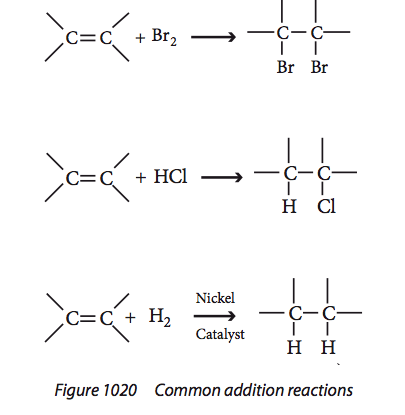 The general formula for the alkene homologous series is CnH2n. A reaction in which the double bond of an alkene is converted to a single bond and two new bonds are formed to the species it reacts with is known as an addition reaction and they are typical of alkenes and alkynes. |
|
10.3.2:
Describe, using equations, the
reactions of symmetrical alkenes with
hydrogen halides and water.
|
See notes.
|
|
10.3.3:
Distinguish between alkanes and
alkenes using bromine water.
|
The usual test for the presence of a carbon–carbon double
or triple bond is to add bromine water to the compound.
If a double or triple bond is present, the bromine water
changes colour from yellow–brown to colourless.
|
|
10.3.4:
Outline the polymerization of alkenes.
|
Include the formation of poly(ethene),
poly(chloroethene) and poly(propene) as examples
of addition polymers.
Include the identification of the repeating unit, for
example, –(–CH2 –CH2 –)n – for poly(ethene).
Polymers are long chain molecules that are formed by the joining together of a large number of repeating units, called monomers, by a process of polymerisation. Polymers, can be made artificially and these are usually referred to as plastics, but there are also a great number of naturally occurring polymers. |
|
10.3.5:
Outline the economic importance of
the reactions of alkenes.
|
Include the hydrogenation of vegetable
oils in the manufacture of margarine, the hydration
of ethene in the manufacture of ethanol, and
polymerization in the manufacture of plastics.
|



